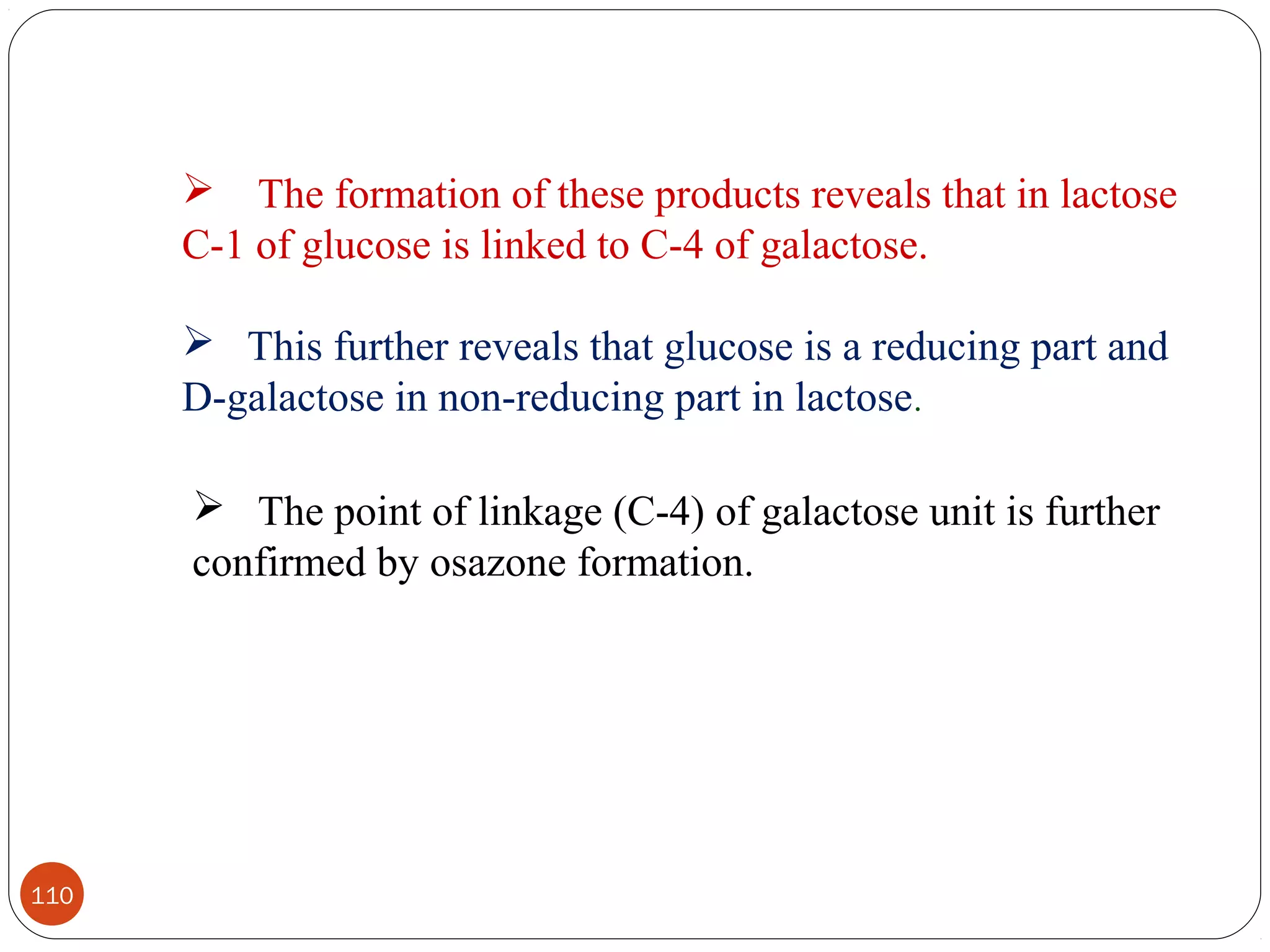The document covers the chemistry of carbohydrates, focusing on their classification, isomerism, functional groups, and importance in biological systems. It details different types of carbohydrates including monosaccharides, oligosaccharides, and polysaccharides, along with their structural features and reactions. Additionally, it discusses important carbohydrates like glucose, fructose, and galactose, including their properties and roles in metabolism.



































































































































